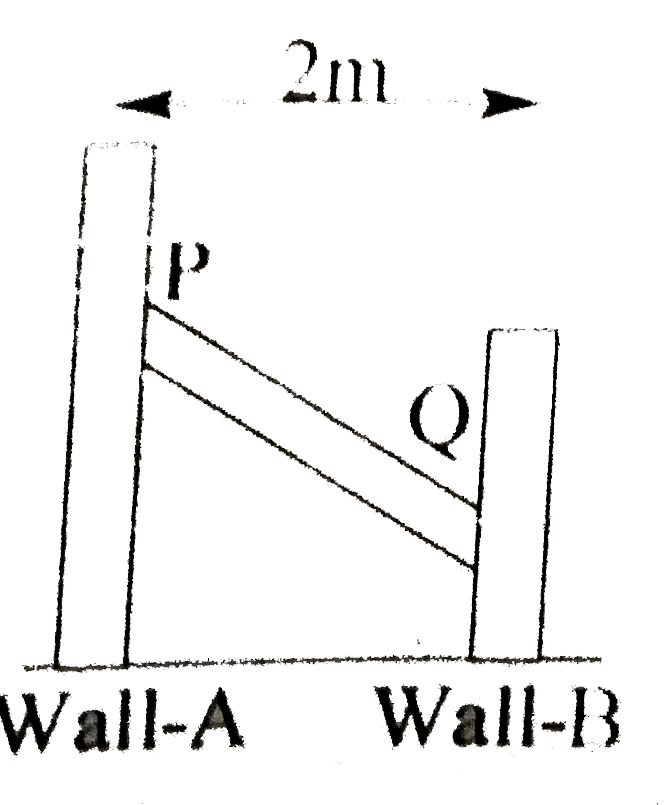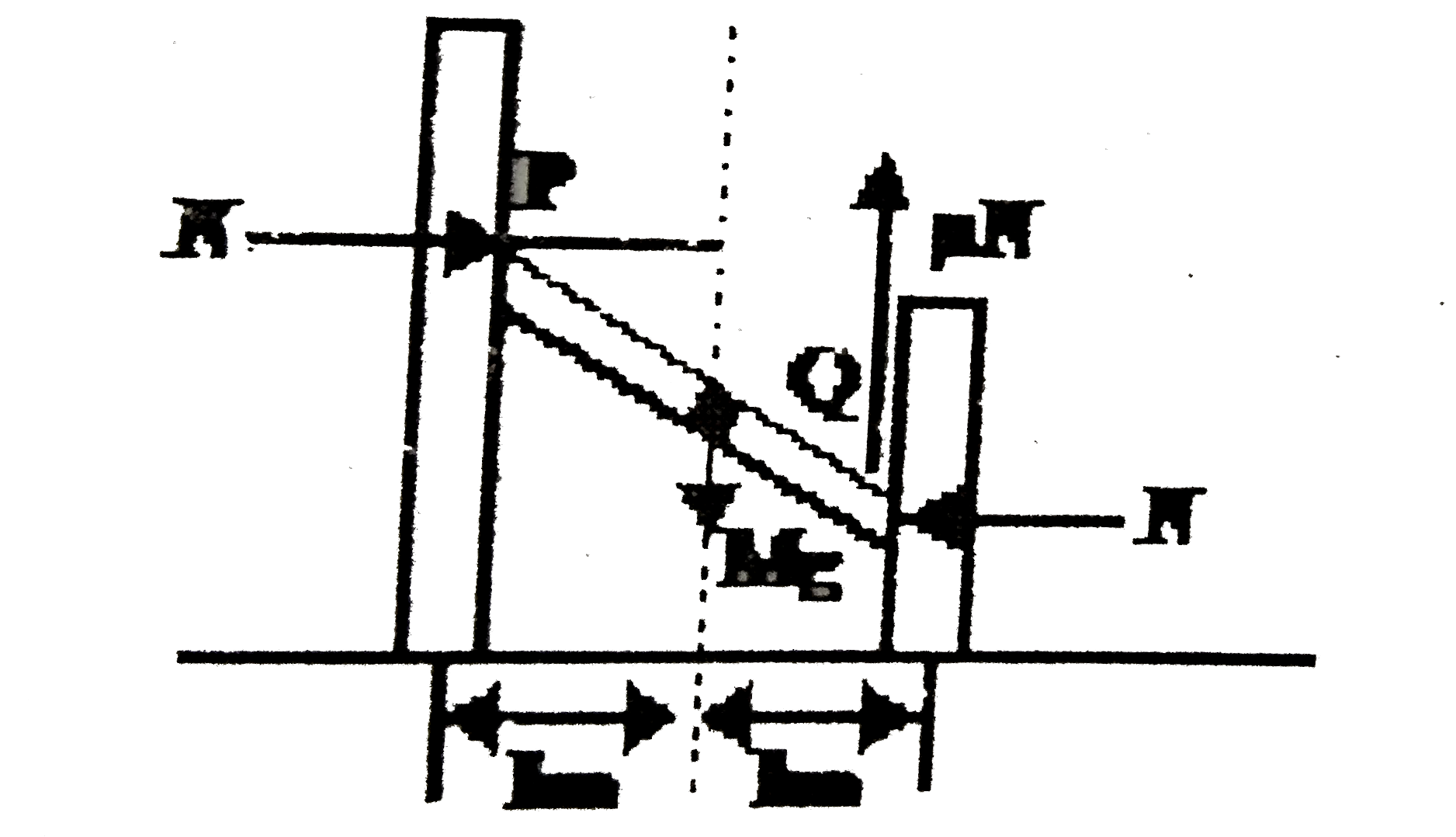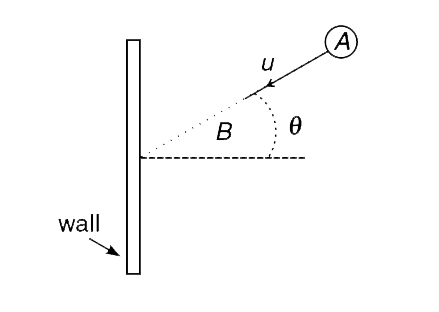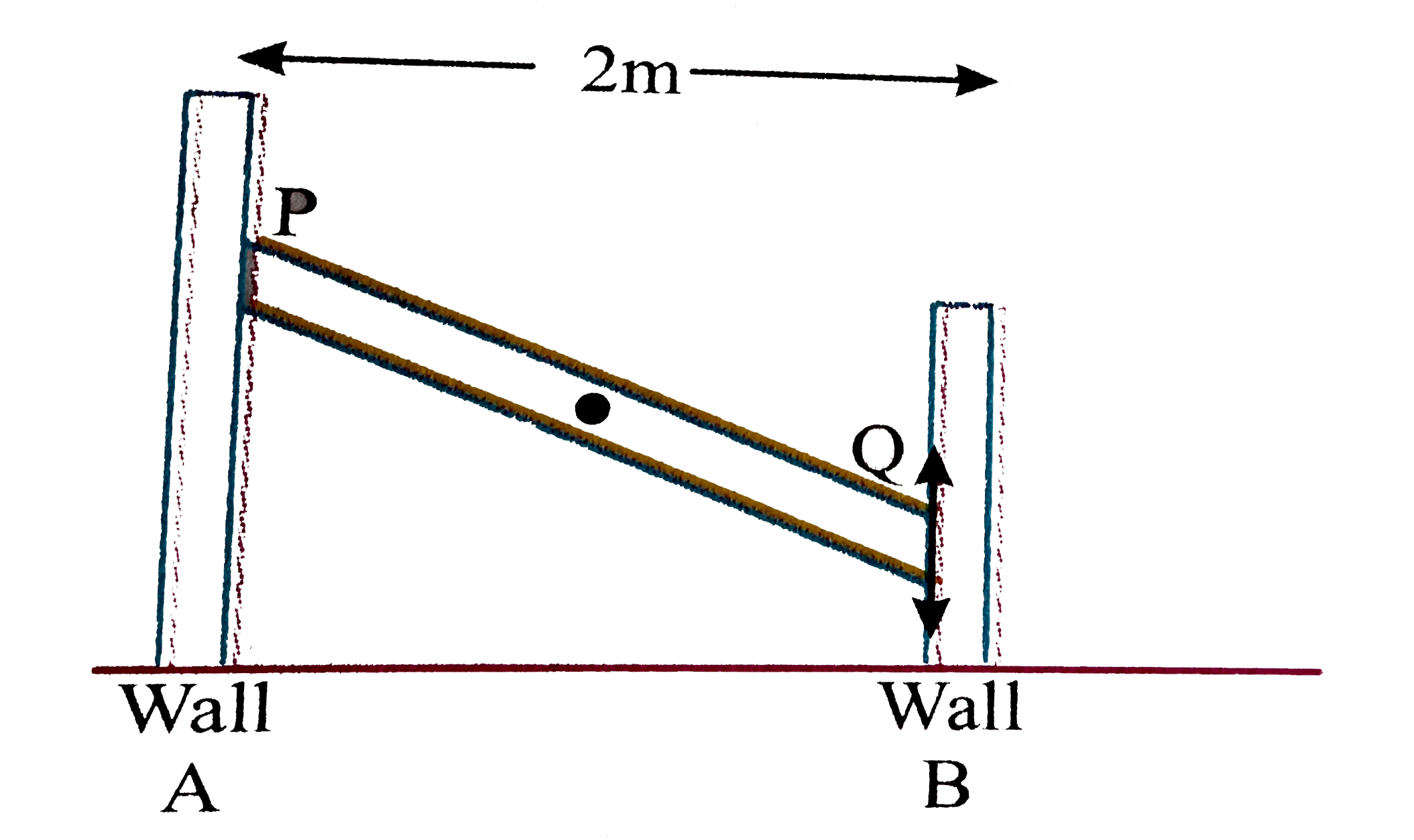
Two vertical walls are separated by a distance of 2 metres. Wall 'A' is smooth while wall B is rough with a coefficient of friction μ=0.5. A uniform rod is propped between them. The length of the longest rod thhat can be probed between te walls is equal to
2 metres
2√2 metres
√5 metres
√172 metres
The correct Answer is:D

Drawing F.B.D. of rod PQ
∑Fx=0
∑Fy=0⇒μN=mg …(1)
∑τ about centre of mass=0
[N×l2sinθ][2]=μN×l2cosθ⇒tanθ=μ2
Hence secθ=(√μ2+4)/2
thus, (l/21)=√μ2+42⇒l=√μ2+4
⇒l=√0.25+4=√172 metres.
Topper's Solved these Questions
- BOOK - FIITJEECHAPTER - TEST PAPERSEXERCISE - PHYSICS747videos
TEST PAPERS
- BOOK - FIITJEECHAPTER - SIMPLE HARMONIC MOTIONEXERCISE - Assignment Problems (Objective) (Level-II)20videos
SIMPLE HARMONIC MOTION
- BOOK - FIITJEECHAPTER - WORK, ENERGY AND POWER EXERCISE - COMPREHENSIONS ( Comprehension-II)5videos
WORK, ENERGY AND POWER
Similar Questions
A uniform rod is made to lean between a rough vertical wall and the ground. The coefficient of friction between the rod and the ground is μ1 and between the rod and the wall is μ2. Find the angle at which the rod can he leaned without slipping.
View SolutionBall A is about to hit a wall at an angle of incidence of θ=30∘. But before hitting the wall it made a head on collision with another identical ball B. The ball B then collides with the wall. The coefficient of restitution for collision between two balls is e1=0.8 and that between a ball and the wall is e1=0.6. Find the final velocity of ball B. Initial velocity of A was u=5ms−1. Neglect friction.
[tan−1(2.252.34)=44∘]
 View Solution
View Solution
Knowledge Check
- Question 1 - Select One
Two vertical walls are separated by a distance of 2 meters, Wall 'A' is smooth while wall B is rough with a coefficient of friction μ=0.5A uniform rod is probed between them. The length of the longest rod that can be probed between the walls is equal to
 A2mB2√2mC√2mD√172m
A2mB2√2mC√2mD√172m - Question 2 - Select One
A uniform ladder rests in limiting equilibrium with its lower end on a rough horizontal plane with coefficient of friction μ and its upper end against a smooth vertical wall. If θ is the inclination of the ladder with the wall, then θ is equal to
Atan−1μBcot−1μCcot−1(2μ)Dtan−1(2μ) - Question 3 - Select One
A uniform ladder rests in limiting equilibrium with its lower end on a rough horizontal plane with coefficient of friction μ and its upper end against a smooth vertical wall. If θ is the inclination of the ladder with the wall, then θ is equal to
Atan−1μBcot−1μCcot−1(2μ)Dtan−1(2μ)
A uniform ladder is placed against a wall, if the ground and wall are equally rough the coefficient of friction being tanθ limiting inclination of the ladder to the vertical is 2θ.
View SolutionA ladder, 10 metre long rests with one end against a smooth vertical wall and the other end on the ground which is rough, the coefficient of friction being 12. The foot of the ladder being 2 metre from the wall. A amn whose weight is 4 times that of the ladder can ascend before it be givens to slip is
View SolutionA sphere is rotatiing between a a rough wall and a smooth wedge as shown in figure If μ is the cofficent of frication between wall and sphere then normal reation between wall and sphere will
 View Solution
View SolutionIf a lodder weighing 250 N is placed against a smooth vertical wall having coefficient of friction between it and floor is 0.3 then what is the maximum force of friction available at the point of contact between the lodder and the floor?
View SolutionIf a lodder weighing 250 N is placed against a smooth vertical wall having coefficient of friction between it and floor is 0.3 then what is the maximum force of friction available at the point of contact between the lodder and the floor?
View Solution

